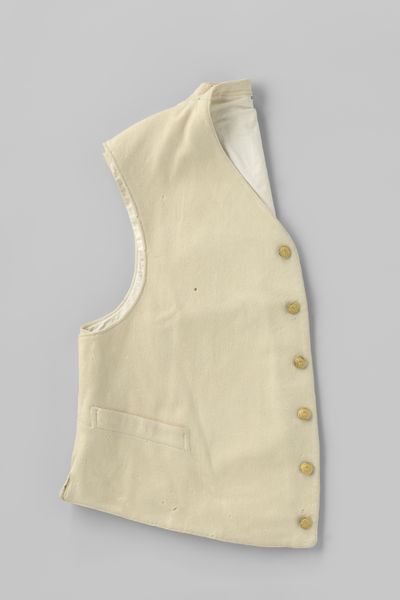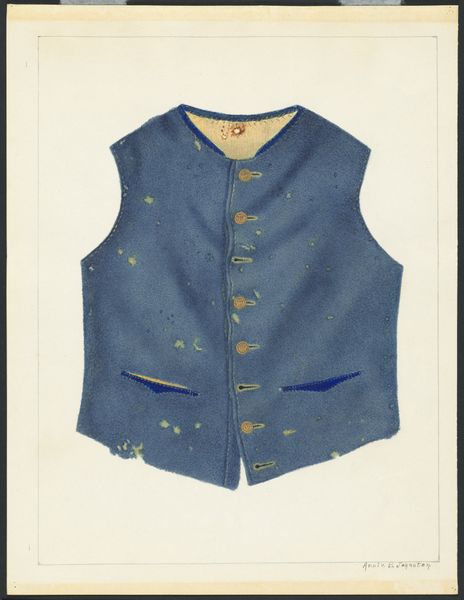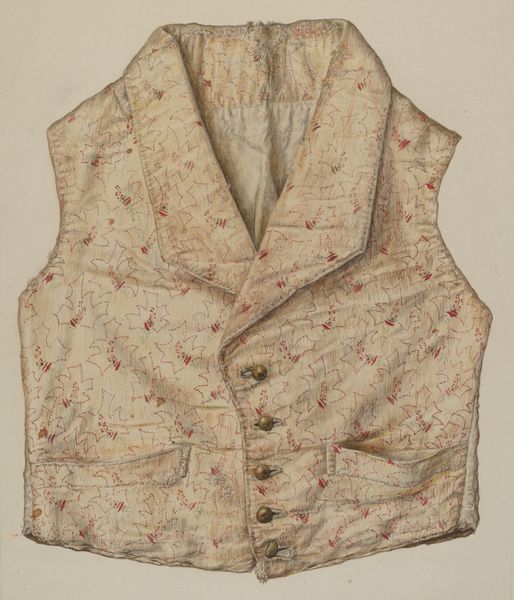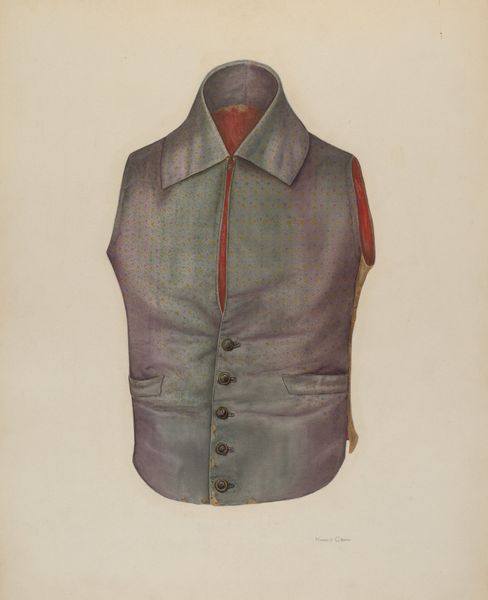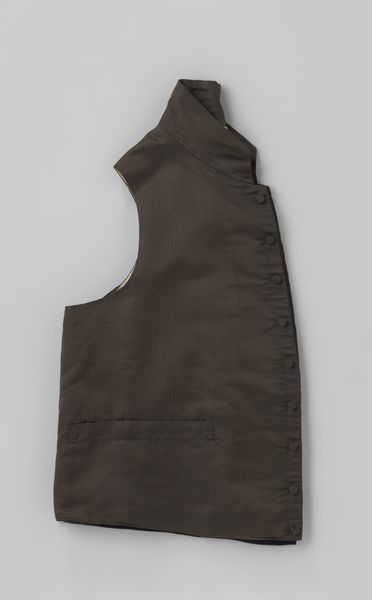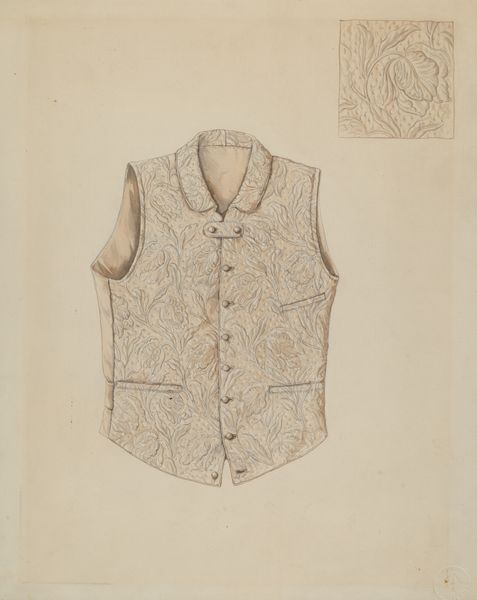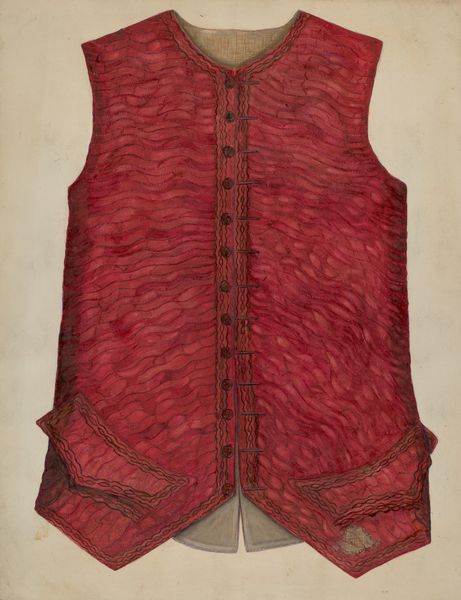
Wintervest van grijs/wit gestreepte wol, kort model, de voorpanden onderaan in een punt gesneden Possibly 1912 - 1917
0:00
0:00
mixed-media, textile
#
fashion design
#
underwear fashion design
#
mixed-media
#
fashion mockup
#
textile
#
clothing promotion photography
#
fashion and textile design
#
clothing photography
#
wearable design
#
geometric
#
clothing photo
#
fashion sketch
#
modernism
#
clothing design
Dimensions: length 64 cm, width 38 cm
Copyright: Rijks Museum: Open Domain
This short winter vest made of grey and white striped wool, with its pointed front, was produced by the firm De Jong. The waistcoat is a garment that comes to prominence in Europe in the late 17th century, specifically within courtly male dress. Over the next three centuries, its significance evolved. By the 19th century, it became a staple in middle-class male attire across Europe and North America, signifying respectability and a level of formality. Given the lack of specific dating for this item, the historian's task is to delve into the firm's history and examine the evolution of waistcoat design. Trade directories and fashion plates are invaluable resources here. These provide crucial insights into understanding the social and cultural status and context of this garment, and how such businesses operated. Ultimately, this vest is more than just an item of clothing; it represents the social and economic life of its time.
Comments
No comments
Be the first to comment and join the conversation on the ultimate creative platform.

